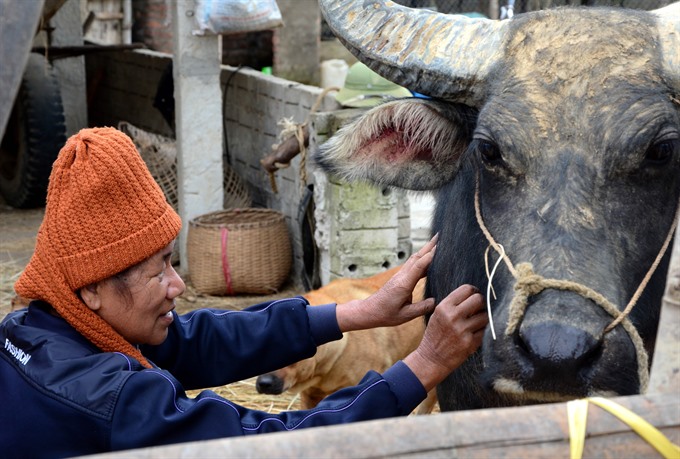 Society
Society

A strong cold spell continues to wreak havoc on the northern and central provinces and Tây Nguyên (Central Highlands) region in the country.
 |
| A farmer in the northern province of Điện Biên cares for her cattle in cold weather. — VNA/VNS Photo Văn Dũng |
HÀ NỘI — A strong cold spell continues to wreak havoc on the northern and central provinces and Tây Nguyên (Central Highlands) region in the country.
Heavy snowfall began in Sa Pa Township in the
According to
On the other hand, chilling weather has caused damage to agricultural production and animal breeding.
To confront the situation, the Livestock Production Department under the Ministry of Agriculture and Rural Development (MARD) has asked local authorities to immediately deploy measures to protect animals from the cold and starvation – reinforcing the barns and maintaining a larger feed storage than usual.
MARD also asked the local authorities to give financial assistance to poor households to reinforce stables and buy feed for animals.
According to Nguyễn Hồng Sơn, head of MARD’s Crop Production Department, there has been no exact calculation of the loss to agricultural production so far.
The department recommended farmers strictly follow instructions to care for rice and vegetables in this weather.
Farmers in the Red (Hồng) River Delta were asked to delay rice cultivation to avoid losses.
Similarly, farmers in the northern central region were asked to halt rice cultivation for the winter-spring crop and wait until the weather turned warmer.
The department asked farmers who have already planted paddy to cover their fields and ensure sufficient water supply.
Provincial and municipal committees for disaster prevention were asked to provide regular updates on the development of the severe cold on mass media to inform all people, especially people in the mountainous region, of the situation so that they can act accordingly.
Local authorities and school managers were also asked to closely follow weather developments to decide whether to allow kindergarten and primary students to stay at home when the temperatures drop below 10 degrees, and secondary high school students when temperatures fall below 7 degrees. — VNS